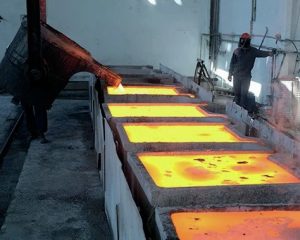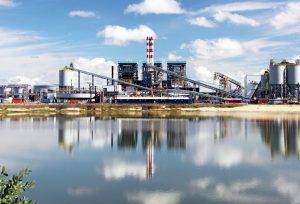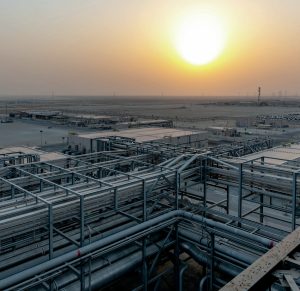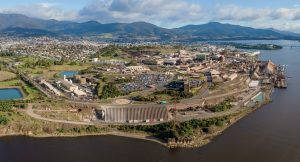
OCP Nutricrops unveils nine million tonne production boost
OCP Group subsidiary OCP Nutricrops has announced a major investment to expand its phosphate fertilizer production capacity by nine million tonnes by 2028.

OCP Group subsidiary OCP Nutricrops has announced a major investment to expand its phosphate fertilizer production capacity by nine million tonnes by 2028.

Adani Group subsidiary Kutch Copper has commenced operations at its new Mundra copper refinery and smelter, the company announced on 28 March. The company previously indicated an expected start-up by the end of Q1. The new smelter will help boost domestic supplies of copper, demand for which is robust from the construction, transport and power sectors in particular and likely to double by 2030, with the shift towards clean energy and electric vehicles. This first phase of the project will have around 500,000 t/a copper capacity, with a similar capacity planned to be added in the second phase by 2029.

It is reported that Tongling Nonferrous is planning production cuts this year given current record low treatment and refining charges (TC/RCs). CRU estimates that the company’s potential cutbacks will total 67,000 tonnes of copper for the year. However, the start-up of the Jinguan II and Chifeng Jinjian II projects could offset the reduction in concentrate demand at operational smelters. Tongling Nonferrous owns five operational smelters/refineries with a total of 1.28 million t/a blister capacity and 1.73 million t/a refined capacity, respectively. It is understood that the Chifeng Jintong 220,000 t/a smelter has cut operating rates by 10% since early March due to concentrate tightness.

Indonesia has become the epicentre of the world nickel industry, and is now seeking to raise royalty rates to capture more value from this. Will this impact upon the continuing expansion of HPAL capacity there?

Sulphur markets have been on a tear over the past few months, driven by strong demand in Asia, with buyers primarily sourcing from the Middle East and Canada through late 2024 and into the early months of 2025. Steady buying from Indonesia and China, the two largest importers of sulphur, appears to have supported the market, in China’s case mainly for phosphate production as well as a variety of industrial processes, and in Indonesia’s case to feed the high pressure acid leach (HPAL) plants that are producing nickel for the battery and stainless steel industries. Prices saw a notable rally following the Chinese Lunar New Year celebrations. Nevertheless, this momentum finally began to shift as April began ago as the pace of price increases in Asia started to slow. As the spring fertilizer application season in China draws to a close, domestic prices began to drop, reaching the equivalent of a delivered price of around $272/t c.fr. As well as the narrowing window for spring application of phosphates, the decline was also driven by weakening demand amid uncertainty over tariffs and export restrictions. In southern China, phosphate producers continue to purchase import cargoes. A major phosphate producer in southwest China has been reported as having bought mainstream material at a price of $303/t c.fr, according to local market sources. Total sulphur port inventories in China had declined by 22,000 tonnes to 1.86 million tonnes by 16 April 2025. The volume at Yangtze River ports increased to 825,000 tonnes, while the port inventory at Dafeng decreased to 400,000 tonnes.

Chinese phosphate and battery chemical producer Chuan Jin Nuo Chemical (KMCJNC) has announced a $265 million plan to build a plant in Egypt to reduce its raw material and export costs. The company will construct facilities in the North African country to produce a range of intermediates and finished products, it revealed in its recent first-quarter earnings report. The plant will have a threeyear construction timeline. Planned capacities for the site are 800,000 t/a of sulfuric acid and 300,000 t/a of ammonium phosphate per year. Other core products will include phosphoric acid and sodium fluorosilicate. At full capacity, the plant is expected to generate over $41 million in net profit, according to feasibility studies.

The Middle East remains the world’s largest regional exporter of sulphur, with additional capacity continuing to come from both refineries and particularly sour gas processing.

CRU’s World Copper Conference was run at the start of April 2025 in Santiago, Chile, with the industry facing a crossroads. The Americas account for nearly half of the world’s mined copper, with South America producing 38% and North America contributing 10%. However, North American copper mines face cash costs 51% above the global average and 79% higher than those of their South American neighbours, positioning the region as one of the most expensive copper-producing areas globally. These high costs create a significant challenge, especially as securing a reliable copper supply has emerged as a geopolitical priority.
Due to an increasingly challenging market, Nyrstar will indefinitely lower production at its Hobart zinc smelter in Tasmania by around 25%. The plant’s zinc capacity is 280,000 t/a. “This decision follows a thorough and extensive review and is a direct response to deteriorating market conditions and financial losses being sustained by Nyrstar Australia,” the Trafiguraowned company said. “Nyrstar’s Australian assets continue to face significant financial challenges due to several external factors including worsening conditions in raw material markets, negative treatment charges and increased costs.”

The Tunisian cabinet has met to review its future programme for phosphate production, transport, and processing for the 2025-2030 period, as well as the current situation of the Tunisian Chemical Group and its work plan for the same period, according to a government statement. The prime minister stressed the need to develop phosphate production as a national resource and a cornerstone of the national economy that must regain its role and position in supporting state revenues and wealth creation, including increasing production capacity, processing, and exports, while investing in modern technology to enhance productivity, exploring new export markets, and prioritising environmental considerations.